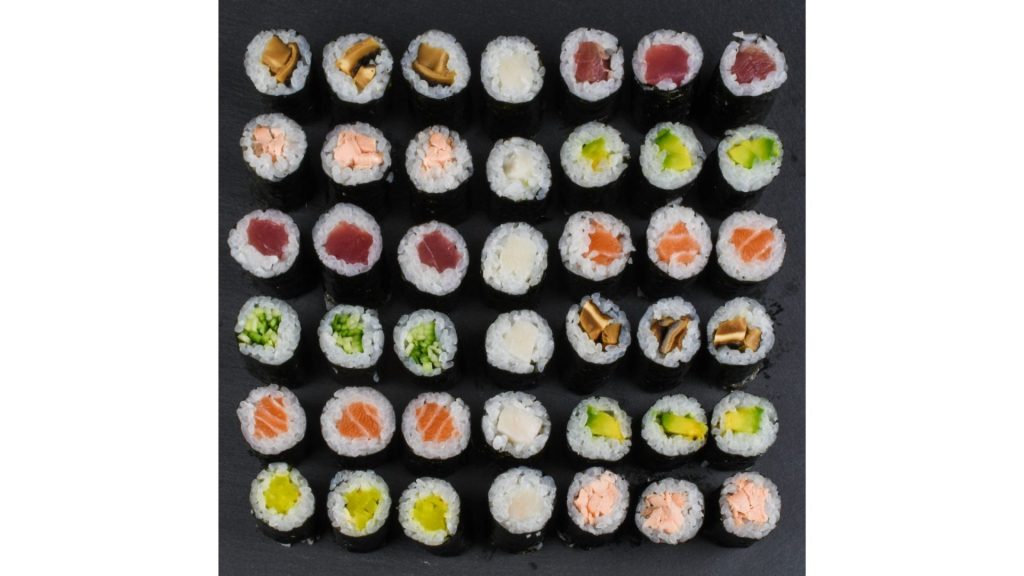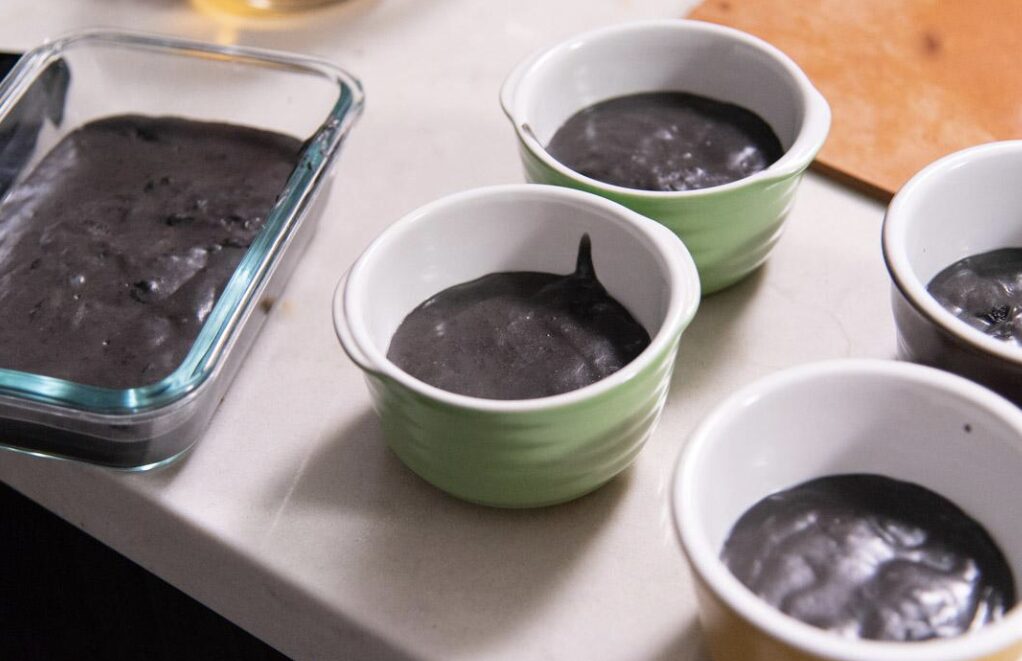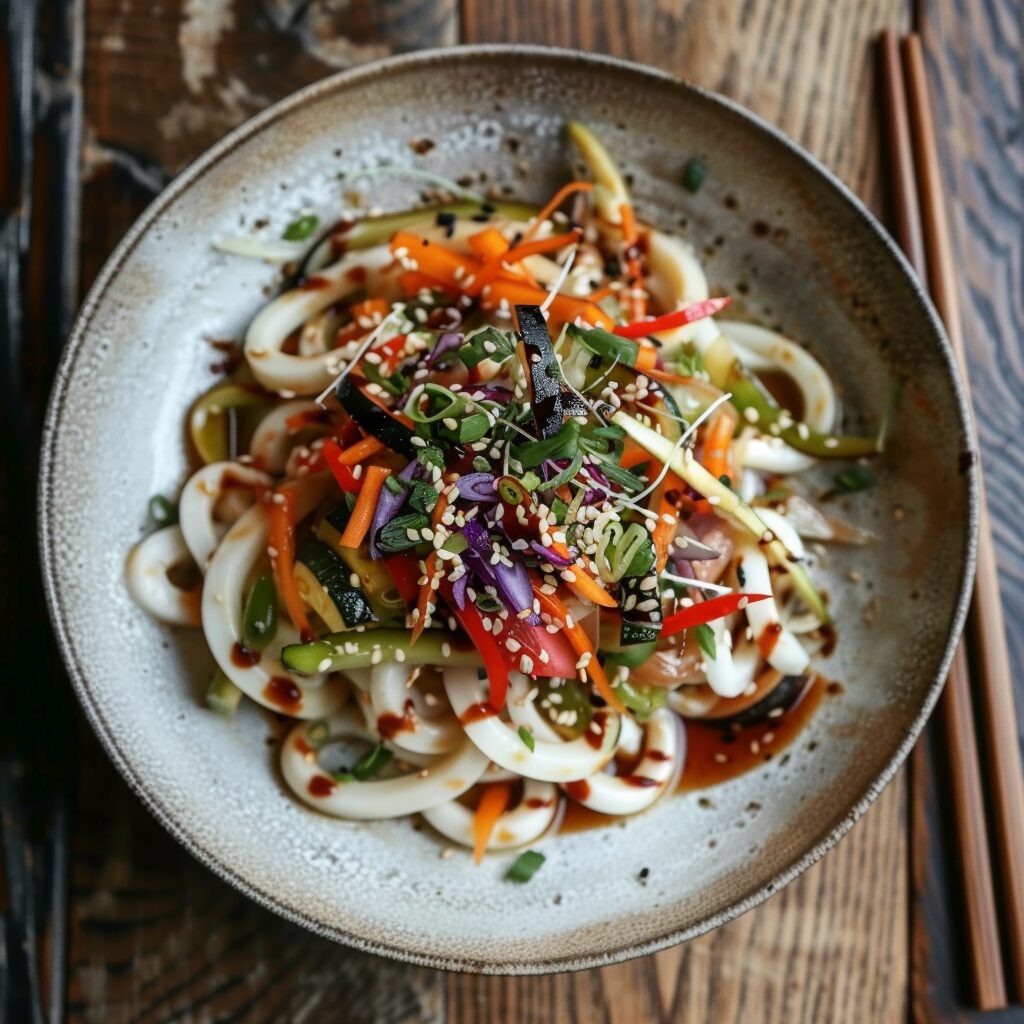Sushi is a popular Japanese dish that has gained worldwide fame for its unique flavors and presentation. It typically consists of raw fish, rice, and seaweed, but there are many variations depending on the type of sushi.
However, one question that often arises when it comes to sushi is ”How long does sushi last?”
The answer to this question varies depending on several factors, including the type of sushi, the quality of ingredients used, and the storage conditions.
For example, raw fish sushi has a shorter shelf life than cooked fish sushi, and homemade sushi may not last as long as store-bought sushi.
Understanding how long does sushi last and how to store it properly is essential for enjoying this delicious dish safely.
Key Takeaways
- Sushi has a limited shelf life, and how long it lasts depends on several factors, including the type of sushi, the quality of ingredients used, and the storage conditions.
- Proper storage of sushi is crucial to ensure its freshness and safety. Raw fish sushi should be consumed within 24 hours, while cooked fish sushi can last up to three days in the refrigerator.
- It is essential to know how to identify spoiled sushi to avoid health risks associated with consuming old sushi. Signs of spoiled sushi include a sour smell, slimy texture, and discoloration.
Understanding Sushi Ingredients
Before we can answer how long does sushi last, it is important to know what it is made of first.
This staple Japanese dish is made up of various ingredients, each with its own unique flavor and texture.
Here, we will discuss the most common sushi ingredients and how they contribute to the overall taste and quality of sushi.
Sushi Rice

Sushi rice is the foundation of sushi. It is a short-grain rice that is sticky and slightly sweet.
The rice is cooked with vinegar, sugar, and salt, giving it a tangy flavor that complements the other ingredients in sushi.
Sushi rice is the perfect texture to hold together the other ingredients in sushi rolls.
Raw Fish

Raw fish is a key ingredient in many types of sushi. It is important to use only sushi-grade fish, which is fish that has been specially prepared to be safe for consumption raw.
Some of the most common types of raw fish used in sushi include tuna, salmon, and shrimp.
Raw fish should be used immediately after purchase to ensure freshness.
Vegetables
Vegetables are an essential ingredient in vegetarian sushi rolls.
Some of the most common vegetables used in sushi include avocado, cucumber, and carrots.
Vegetables add a refreshing crunch to sushi rolls and provide a contrast to the soft texture of the rice and fish.
Seaweed
Seaweed is used to wrap sushi rolls. The most common type of seaweed used in sushi is nori, which is a dried, paper-thin sheet of seaweed.
Seaweed adds a salty flavor to sushi rolls and helps to hold the ingredients together.
Vinegar
Vinegar is an important ingredient in sushi rice. It is used to give the rice a tangy flavor and to help preserve the rice. Rice vinegar is the most commonly used type of vinegar in sushi, but other types of vinegar can be used as well.
Sushi Quality and Freshness
The quality and freshness of sushi are crucial for a delicious and safe dining experience. When it comes to sushi, freshness is key.
Sushi made with fresh ingredients will have a better taste, texture, and odor.
It is important to note that sushi should be consumed as soon as possible after preparation to ensure maximum freshness.
Sushi Quality in Restaurants

When dining at a sushi bar or restaurant, it is important to pay attention to the quality of the ingredients used.
High-quality sushi restaurants will source the freshest ingredients and have strict protocols in place to ensure the safety of their customers.
It is also important to note that sushi restaurants will typically have a higher turnover rate, meaning that the sushi will be fresher compared to grocery stores or supermarkets.
Sushi Quality at Grocery stores

When purchasing sushi from a grocery store or supermarket, it is important to check the expiration date and the quality of the ingredients.
Sushi that has been sitting on the shelf for too long may have a sour odor or slimy texture, indicating that it is no longer fresh.
It is also important to note that sushi made with fresh ingredients will typically have a higher price point.
Sushi Storage Guidelines
When it comes to storing sushi, proper storage is key to ensure that it remains safe to eat and maintains its quality for as long as possible. Here are some guidelines to help you store your sushi correctly.
Refrigeration
Storing sushi in the refrigerator is the best way to keep it fresh for a few days.
Raw sushi should be stored at a temperature of 40°F (4°C) or below, while cooked sushi can be stored at a slightly higher temperature of 45°F (7°C) or below.
It is important to note that sushi should be consumed within two days of refrigeration to ensure its safety and quality.
To store sushi in the fridge, wrap it tightly in plastic wrap or cling film to prevent it from drying out or absorbing any odors from other foods in the fridge. You can also store sushi in an airtight container to keep it fresh for longer.
Freezing
If you have leftover sushi that you won’t be able to consume within two days, you can freeze it to extend its shelf life.
However, it is important to note that freezing sushi can compromise its quality, especially if it contains raw fish.
To freeze sushi, wrap it tightly in plastic wrap or foil and place it in an airtight container.
Make sure to label the container with the date of freezing so you can keep track of how long it has been in the freezer.
Frozen sushi can last for up to two months, but it is best to consume it as soon as possible for optimal taste and texture.
Airtight Containers
Using airtight containers is a great way to store sushi, whether it is in the fridge or freezer.
Airtight containers prevent air and moisture from getting in, which can cause the sushi to spoil or become soggy.
When using airtight containers, make sure to choose a size that fits the sushi snugly to prevent any air pockets.
You can also use a layer of plastic wrap or cling film to wrap the sushi before placing it in the container for added protection.
By following these storage guidelines, you can ensure that your sushi stays fresh and safe to eat for as long as possible. Remember to always use proper storage techniques and consume sushi within the recommended time frame to avoid any potential health risks.
How Long Does Sushi Last
It’s important for all sushi lovers and consumers to know how long does sushi last to avoid food poisoning.
In this section, we will discuss how long sushi lasts at room temperature, in the fridge, and in the freezer.
At Room Temperature
Sushi should not be left at room temperature for more than two hours.
Bacterial growth can occur rapidly at room temperature, and sushi can become unsafe to eat.
It’s best to consume sushi as soon as possible after it’s prepared or purchased.
In the Fridge
When storing sushi in the fridge, it’s essential to keep it in an airtight container to prevent moisture from accumulating. Raw fish and shellfish can be refrigerated for 1-2 days, but cooked sushi can last for 3-4 days.
Sushi that contains fish can last between three days and a week in the fridge, while sushi without fish can last for up to a week. However, it’s important to note that the lifespan of sushi can vary depending on the type of sushi.
Sushi can spoil quickly if not stored correctly, and it’s crucial to keep it away from other food in the fridge. It’s also important to check the expiry date or expiration date of the sushi before consuming it.



Konnichiwa! (Hello!) I'm Pat Tokuyama, a Japanese tofu cookbook author, who travels for music, food, and adventure. If you like Japanese tea, checkout some of the newestorganic japanese tea, matcha bowls and noren and more!
** Curious about the Plant Based Japanese Cooking Club? ** Learn more here!
In the Freezer
If you want to store sushi for an extended period, you can freeze it. Frozen sushi can last for about one to two months. However, it’s important to note that the texture and quality of the sushi may change after it’s been frozen.
It’s best to store sushi in the freezer in an airtight container or freezer bag to prevent freezer burn.
If you’re planning to freeze your sushi for later consumption, it’s important to defrost it properly before serving.
To defrost sushi, simply transfer it from the freezer to the refrigerator and allow it to thaw slowly overnight. Avoid defrosting sushi in the microwave, as this can cause the rice to become dry and tough.
Health Risks of Consuming Old Sushi
Consuming old sushi can pose serious health risks, especially if it contains raw fish. Sushi that has been left at room temperature for more than an hour or not stored properly can quickly become contaminated with bacteria and parasites, leading to foodborne illness and food poisoning.
The FDA recommends that sushi should be consumed within 24 hours if it contains raw fish and within three days if it contains cooked fish. Any longer than that and the risk of bacterial growth increases significantly.
One of the most common bacteria found in raw fish is Salmonella, which can cause symptoms such as diarrhea, fever, and abdominal cramps.
Other bacteria that can be found in raw fish include Vibrio and Listeria, which can also cause serious illness.
In addition to bacteria, raw fish can also contain parasites such as Anisakis, which can cause allergic reactions and gastrointestinal symptoms.
These parasites can be killed by freezing the fish for at least 24 hours before consumption, but not all sushi restaurants follow this practice.
Consuming spoiled sushi can also cause health risks such as food poisoning, which can lead to symptoms such as nausea, vomiting, and diarrhea.
It is important to always check the sushi for any signs of spoilage before consuming it, such as a sour smell or slimy texture.
How to Identify Spoiled Sushi
Sushi is a delicious and healthy food, but it can spoil quickly if not stored properly. Here are some signs to look out for to identify spoiled sushi:
- Slimy texture: If the sushi feels slimy or sticky, it is a sign that it has gone bad. This slimy texture is caused by bacteria growth and is a clear indication that the sushi is no longer safe to eat.
- Sour smell: Sushi that smells sour or acidic is a sign that it has gone bad. This smell is caused by the breakdown of the rice and fish, and it is a clear indication that the sushi is no longer fresh.
- Mold: If you see any signs of mold on the sushi, it is a clear indication that it has gone bad. Mold can grow on the rice or fish and can be dangerous to consume. It is important to discard any sushi that has mold on it.
- Bland taste: If the sushi tastes bland or flavorless, it is a sign that it has gone bad. The lack of flavor is caused by the breakdown of the rice and fish, and it is a clear indication that the sushi is no longer fresh.
It is important to note that these signs can vary depending on the type of sushi and the ingredients used. For example, sushi that contains avocado may turn brown when it goes bad, while sushi made with cooked fish may have a different texture when it spoils.
In general, it is best to consume sushi within 24 hours of purchase and to store it in the refrigerator at a temperature of 40°F or below. If you are unsure whether your sushi is still fresh, it is always better to err on the side of caution and discard it.
Special Considerations for Homemade and Vegetarian Sushi
When it comes to homemade sushi, it’s important to pay extra attention to food safety practices. Raw fish, which is a common ingredient in sushi, can harbor harmful bacteria that can cause foodborne illness if not handled properly.
Therefore, it’s crucial to use fresh, high-quality ingredients and to follow proper food safety practices when making sushi at home.
If you’re making vegetarian sushi, you don’t have to worry about the risks associated with raw fish. However, you should still be mindful of the ingredients you’re using and how long they’ve been sitting out.
Vegetarian sushi made with fresh fruits and vegetables can be a healthy and delicious option, but it’s important to keep in mind that these ingredients can also spoil quickly.
To ensure that your homemade sushi stays fresh and safe to eat, here are some tips to keep in mind:
- Use fresh ingredients: Whether you’re using raw fish or vegetables, it’s important to use fresh ingredients that haven’t been sitting out for too long. This will reduce the risk of harmful bacteria growing on the food.
- Store leftovers properly: If you have leftover sushi, make sure to store it in an airtight container in the refrigerator. Sushi made with raw fish should be consumed within 1-2 days, while sushi made with cooked fish or vegetables can last for up to 3-4 days.
- Be mindful of fruit: If you’re making fruit sushi, be aware that fruits like avocado and banana can quickly turn brown and spoil. To prevent this, you can sprinkle lemon juice on the fruit to help preserve it.
- Practice good hygiene: When making sushi at home, it’s important to practice good hygiene to prevent the spread of harmful bacteria. Wash your hands frequently, use clean utensils and cutting boards, and make sure to keep your work area clean.
Serving and Consuming Sushi
When it comes to serving and consuming sushi, there are a few things to keep in mind.
Traditional Way of Serving Sushi
First and foremost, it’s important to respect the tradition and culture surrounding this beloved cuisine. Sushi is often served in small portions, meant to be savored slowly and enjoyed with friends or family.
Traditionally, sushi is served with a small amount of wasabi on top of the fish. Wasabi is a spicy green paste made from the root of the wasabi plant, and it adds a unique flavor and heat to the sushi.
However, it’s important to use wasabi sparingly, as it can easily overpower the delicate flavors of the fish.
Soy sauce is another common accompaniment to sushi. It’s typically served in small dishes alongside the sushi, and diners can dip their sushi into the soy sauce before eating.
However, it’s important to use soy sauce in moderation, as it can also overpower the flavors of the sushi.
Additionally, it’s important to avoid pouring soy sauce directly onto the rice, as this can cause the rice to fall apart.
Ginger is often served alongside sushi as well. It’s typically pickled and served in thin slices, and it’s meant to be eaten between different types of sushi to cleanse the palate. Ginger can also be used to help neutralize the spicy heat of wasabi.
Sides with Sushi
When it comes to sides, there are a variety of options that can be served alongside sushi. Some popular choices include edamame, miso soup, and seaweed salad. These sides can help round out the meal and provide additional flavors and textures.
In summary, serving and consuming sushi is all about respecting the tradition and culture surrounding this beloved cuisine. Use wasabi and soy sauce sparingly, enjoy ginger between different types of sushi, and consider serving sides like edamame, miso soup, and seaweed salad. If you’re planning to freeze your sushi, be sure to defrost it properly before serving.
Conclusion
In conclusion, it’s crucial to store sushi properly and consume it before it goes bad. Sushi can spoil quickly, and bacterial growth can occur rapidly if it’s not stored correctly.
It’s best to consume sushi as soon as possible after it’s prepared or purchased. When storing sushi, it’s essential to keep it in an airtight container in the fridge or freezer to prevent moisture from accumulating.
It’s also important to check the expiry date or expiration date of the sushi before










Konnichiwa! (Hello!) I'm Pat Tokuyama, a Japanese tofu cookbook author, who travels for music, food, and adventure. If you like Japanese tea, checkout some of the newestorganic japanese tea, matcha bowls and noren and more!
** Curious about the Plant Based Japanese Cooking Club? ** Learn more here!